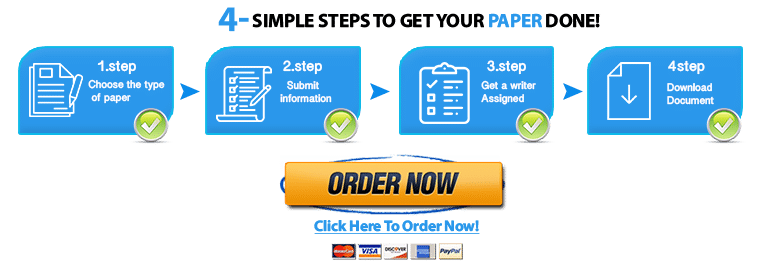health promotion project
Hi, i need the table i uploaded to be filled
Health Promotion Program, Part B2: Evidence-based Literature SearchYou will be expected to search for the highest level of evidence for your health promotion project. Please listen to the lecture on searching the evidence, use the services of the research librarian, and pull from the knowledge gained in NUR 39000 Nursing Research to complete this assignment. The Purdue Owl website is a great resource for you when citing your references in APA style.
Self- Assessment of Learning Styles.pdf Click for more options .
JBI-Levels-of-Evidence(1).pdf
Library Resources: The reference librarian for the School of Nursing has created a very helpful website of library resources for this course. Click on the link below to accept this website:NUR 39400 Library Resource Guide
https://mycourses.purdue.edu/bbcswebdav/pid-12421733-dt-content-rid-93949047_1/courses/pnw_45033.201920/JBI-Levels-of-Evidence%281%29.pdf
New JBI Levels of Evidence
Developed by the Joanna Briggs Institute Levels of Evidence and Grades of Recommendation Working Party October 2013
PLEASE NOTE: These levels are intended to be used alongside the supporting document outlining their use. Using Levels of Evidence does not preclude the need for careful reading, critical appraisal and clinical reasoning when applying evidence.
LEVELS OF EVIDENCE FOR EFFECTIVENESS
Level 1 – Experimental Designs
Level 1.a – Systematic review of Randomized Controlled Trials (RCTs)
Level 1.b – Systematic review of RCTs and other study designs
Level 1.c – RCT
Level 1.d – Pseudo-RCTs
Level 2 – Quasi-experimental Designs
Level 2.a – Systematic review of quasi-experimental studies
Level 2.b – Systematic review of quasi-experimental and other lower study designs
Level 2.c – Quasi-experimental prospectively controlled study
Level 2.d – Pre-test – post-test or historic/retrospective control group study
Level 3 – Observational – Analytic Designs
Level 3.a – Systematic review of comparable cohort studies
Level 3.b – Systematic review of comparable cohort and other lower study designs
Level 3.c – Cohort study with control group
Level 3.d – Case – controlled study
Level 3.e – Observational study without a control group
Page | 2
Level 4 – Observational –Descriptive Studies
Level 4.a – Systematic review of descriptive studies
Level 4.b – Cross-sectional study
Level 4.c – Case series
Level 4.d – Case study
Level 5 – Expert Opinion and Bench Research
Level 5.a – Systematic review of expert opinion
Level 5.b – Expert consensus
Level 5.c – Bench research/ single expert opinion
Page | 3
LEVELS OF EVIDENCE FOR DIAGNOSIS
Level 1 – Studies of Test Accuracy among consecutive patients
Level 1.a – Systematic review of studies of test accuracy among consecutive patients
Level 1.b – Study of test accuracy among consecutive patients
Level 2 – Studies of Test Accuracy among non-consecutive patients
Level 2.a – Systematic review of studies of test accuracy among non-consecutive patients
Level 2.b – Study of test accuracy among non-consecutive patients
Level 3 – Diagnostic Case control studies
Level 3.a – Systematic review of diagnostic case control studies
Level 3.b – Diagnostic case-control study
Level 4 – Diagnostic yield studies
Level 4.a – Systematic review of diagnostic yield studies
Level 4.b – Individual diagnostic yield study
Level 5 – Expert Opinion and Bench Research
Level 5.a – Systematic review of expert opinion
Level 5.b – Expert consensus
Level 5.c – Bench research/ single expert opinion
Page | 4
LEVELS OF EVIDENCE FOR PROGNOSIS
Level 1 – Inception Cohort Studies
Level 1.a – Systematic review of inception cohort studies
Level 1.b – Inception cohort study
Level 2 – Studies of All or none
Level 2.a – Systematic review of all or none studies
Level 2.b – All or none studies
Level 3 – Cohort studies
Level 3.a – Systematic review of cohort studies (or control arm of RCT)
Level 3.b – Cohort study (or control arm of RCT)
Level 4 – Case series/Case Controlled/ Historically Controlled studies
Level 4.a – Systematic review of Case series/Case Controlled/ Historically Controlled studies
Level 4.b – Individual Case series/Case Controlled/ Historically Controlled study
Level 5 – Expert Opinion and Bench Research
Level 5.a – Systematic review of expert opinion
Level 5.b – Expert consensus
Level 5.c – Bench research/ single expert opinion
Page | 5
LEVELS OF EVIDENCE FOR ECONOMIC EVALUATIONS
Levels
1. Decision model with assumptions and variables informed by systematic review and tailored to fit the decision making context.
2. Systematic review of economic evaluations conducted in a setting similar to the decision makers.
3. Synthesis/review of economic evaluations undertaken in a setting similar to that in which the decision is to be made and which are of high quality (comprehensive and credible measurement of costs and health outcomes, sufficient time period covered, discounting, and sensitivity testing).
4. Economic evaluation of high quality (comprehensive and credible measurement of costs and health outcomes, sufficient time period covered, discounting and sensitivity testing) and conducted in setting similar to the decision making context.
5. Synthesis / review of economic evaluations of moderate and/or poor quality (insufficient coverage of costs and health effects, no discounting, no sensitivity testing, time period covered insufficient).
6. Single economic evaluation of moderate or poor quality (see directly above level 5 description of studies). 7. Expert opinion on incremental cost effectives of intervention and comparator.
Page | 6
LEVELS OF EVIDENCE FOR MEANINGFULNESS
1. Qualitative or mixed-methods systematic review
2. Qualitative or mixed-methods synthesis
3. Single qualitative study
4. Systematic review of expert opinion
5. Expert opinion
attachment
BestAvailableEvidenceworksheet.docx
Posted: A Year AgoDue: 12/01/2019Budget: $15


